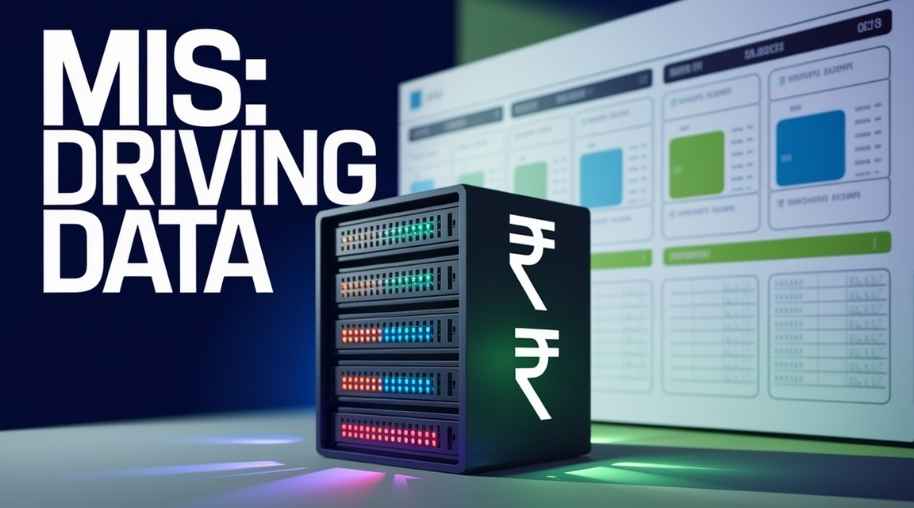MIS Full Form-Management Information System
by Shashi Gaherwar
0 2057
Management Information System (MIS): Role, Components, Benefits, and Future Trends
Introduction
In today's digital era, businesses rely heavily on technology to streamline operations and maintain a competitive edge. One of the most critical tools in this technological revolution is the Management Information System (MIS). MIS integrates technology, people, and processes to manage business data efficiently, facilitating informed decision-making and strategic planning. This article explores the role of MIS, its key components, benefits, and the future of information systems in business.

What is a Management Information System (MIS)?
A Management Information System (MIS) is a structured framework that collects, processes, stores, and disseminates information to support business operations and managerial decision-making. It serves as the backbone of organizational IT infrastructure, ensuring that data is accessible, accurate, and useful for strategic and operational needs.
MIS includes software, hardware, data, procedures, and personnel, all working together to provide insights that drive business efficiency and innovation.
Key Components of MIS
A well-functioning MIS comprises several critical components:
- Hardware: Includes servers, computers, networking devices, and storage systems that facilitate data processing.
- Software: Encompasses enterprise applications, databases, and analytical tools that organize and interpret data.
- Data: The raw material that feeds into the MIS, ensuring businesses make evidence-based decisions.
- People: IT professionals, analysts, and managers who operate and analyze information within the MIS framework.
- Processes: Structured methods and protocols followed to ensure data integrity, security, and usability.
Functions of MIS in Business
MIS is a vital part of modern business operations, serving multiple functions:
- Decision Support: Provides managers with timely and relevant data to enhance decision-making.
- Operational Efficiency: Automates routine processes, reducing manual efforts and minimizing errors.
- Data Management: Organizes large volumes of business data, ensuring secure storage and easy retrieval.
- Performance Monitoring: Tracks key business metrics, helping companies measure efficiency and productivity.
- Competitive Advantage: Supports data-driven strategies, enabling businesses to outpace competitors through insights and innovation.
Benefits of Implementing MIS
The adoption of a robust MIS offers numerous advantages:
- Improved Decision-Making: Real-time access to critical data helps businesses make informed and strategic choices.
- Enhanced Efficiency: Automation reduces manual tasks, increasing productivity and reducing operational costs.
- Data Security and Integrity: Secure storage and controlled access prevent data breaches and unauthorized access.
- Better Customer Relationship Management (CRM): Tracks customer interactions, improving service delivery and satisfaction.
- Scalability: As businesses grow, MIS can scale to accommodate increased data needs and complexity.
Types of Management Information Systems
Different businesses use various types of MIS, depending on their needs:
- Transaction Processing System (TPS): Handles day-to-day business transactions, such as sales and payroll processing.
- Decision Support System (DSS): Assists in complex decision-making by analyzing large data sets.
- Enterprise Resource Planning (ERP): Integrates core business processes across departments to enhance workflow and communication.
- Executive Information System (EIS): Provides senior executives with critical data summaries for strategic planning.
- Customer Relationship Management (CRM): Manages customer interactions and improves service quality.
Challenges in Implementing MIS
Despite its advantages, MIS implementation comes with challenges:
- High Initial Costs: Implementing a comprehensive MIS requires significant investment in hardware, software, and training.
- Data Security Risks: With rising cyber threats, businesses must prioritize data protection.
- User Resistance: Employees may resist adapting to new technology, necessitating training and change management.
- System Integration Issues: Integrating MIS with existing systems can be complex and require specialized expertise.
Future Trends in MIS
As technology evolves, so does MIS. Future trends include:
- Artificial Intelligence (AI) and Machine Learning: AI-driven analytics will enhance predictive decision-making.
- Cloud-Based MIS: Businesses will adopt cloud-based systems for greater flexibility and cost efficiency.
- Big Data and Analytics: Advanced data analytics will provide deeper business insights and trend forecasting.
- Blockchain for Security: Enhancing data security and transparency through decentralized ledgers.
Management Information Systems (MIS) are indispensable tools for businesses in a data-driven world. From improving decision-making to optimizing operations and enhancing customer relations, MIS plays a crucial role in ensuring organizational success. As technology advances, businesses that embrace modern MIS solutions will gain a significant competitive advantage, ensuring long-term growth and sustainability.
Further Learning Resources
For insights into building a successful blogging platform, explore this guide at Coding Tag – How to Start a Successful Blog.
For UPSC exam preparation, visit www.iasmania.com for tailored resources and current affairs notes.

Share:








Comments
Waiting for your comments